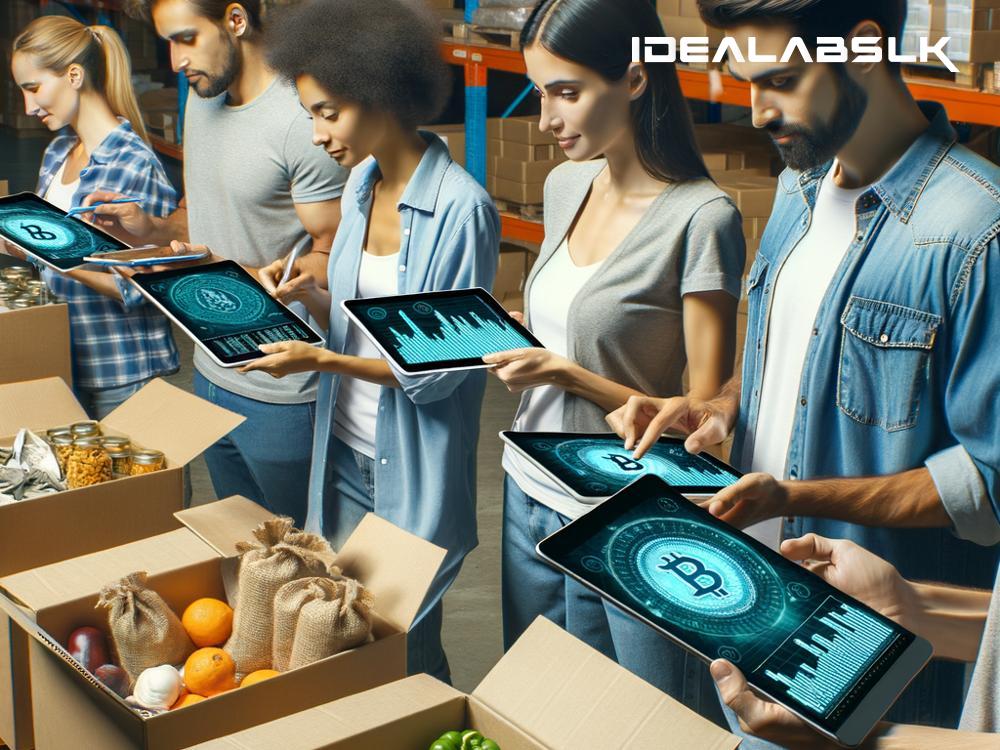AI and Blockchain: Revolutionizing Food Donations for a Hungry World
In a world where technology shapes the future, two powerful tools - Artificial Intelligence (AI) and Blockchain - are teaming up to tackle one of humanity's oldest problems: hunger. While food is plenty, its distribution is plagued with inefficiencies and inequalities, letting tons of food go to waste while many go hungry. The fusion of AI and Blockchain into the realm of food donations is paving the way for a more optimized, fair, and transparent system that promises to transform the way we help those in need.
Understanding AI and Blockchain
To appreciate the revolution underway, let’s break down these technologies into simple terms:
-
Artificial Intelligence (AI): Imagine a computer or a robot that can think, learn, and make decisions almost like a human. That's AI in a nutshell. It's technology designed to crunch large amounts of data, learn patterns, predict outcomes, and suggest the best courses of action.
-
Blockchain: Think of it as a digital ledger that is secure, transparent, and impossible to tamper with. Each block in the chain contains a number of transactions, and once entered, the information can never be erased. This technology is what powers cryptocurrencies, but its potential extends far beyond.
Revolutionizing Food Donations
So, how are AI and Blockchain making waves in the food donation sphere? The magic lies in their ability to optimize, secure, and make transparent every step of the food donation process.
1. Predicting Needs and Wastage
AI can analyze data from various sources to predict where food is needed the most and which areas are experiencing surpluses. For instance, an edible surplus in a supermarket can be identified early and rerouted to a nearby shelter that AI algorithms have predicted will face food shortage. This way, food reaches those who need it most, just in time.
2. Streamlining Logistics
Transportation and storage of donated food present logistical nightmares. AI steps in by optimizing routes for collection and delivery, ensuring that food spends the least time in transit, reducing the risk of spoilage. Furthermore, AI can predict the best methods for storing different types of food, extending their shelf life.
3. Real-time Tracking with Blockchain
Blockchain introduces unmatched transparency and security into the donation process. Each food parcel can be tagged and monitored in real-time as it moves from donor to recipient. This not only builds trust among stakeholders but also ensures that aid reaches its intended destination. Any attempt at diversion or fraud is easily spotted and addressed.
4. Ensuring Fairness and Equitable Distribution
With AI and Blockchain, the distribution of donations can be monitored and adjusted in real time to ensure that resources are allocated fairly. AI algorithms can analyze data to identify regions facing chronic shortages and ensure they receive a bigger share of the aid. Blockchain, on the other hand, makes sure that this distribution is done transparently and without bias.
5. Building Trust and Encouraging Participation
Transparency is key to building trust. When donors see exactly where their contributions are going, and recipients see the fairness in distribution, confidence in the donation system grows. This encourages more participation from both sides, increasing the impact of food donation programs.
The Future is Bright
The integration of AI and Blockchain into food donations is still in its infancy, but the potential benefits are immense. By making the process smarter, more efficient, and transparent, these technologies can help ensure that less food goes to waste, and more makes its way to those in dire need.
However, for this vision to become a reality, there is a need for collaboration among tech companies, food donation organizations, governments, and the private sector. There’s also a pressing need for public awareness and support for initiatives employing these technologies.
Conclusion
As we stand on the brink of a technological revolution, AI and Blockchain are not just buzzwords but beacon lights guiding us towards a future where hunger and food wastage are significantly reduced. By leveraging these technologies, we can optimize food donations, making them more efficient, transparent, and fair. This is not just a victory for technology but a hopeful dawn for humanity's war against hunger. The journey ahead is exciting, and everyone has a part to play in making it a success.

